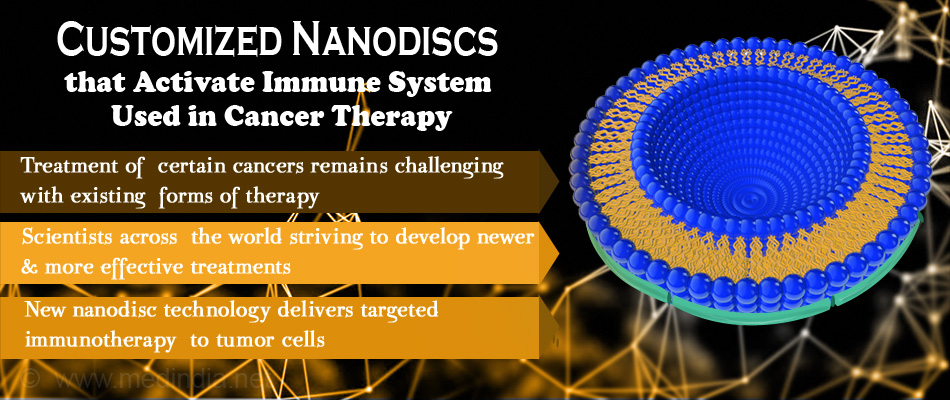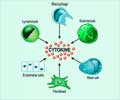
- Incidence of cancer is on the rise worldwide, but treatment and cure of many cancers continue to remain challenging.
- Nanodisc technology may help to deliver targeted immunotherapy against cancer cells, finds a study from the University of Michigan.
- Nanodiscs containing tumor antigens activate the immune system to fight and kill cancer cells.
Aim of the Study
The aim of this study was to explore the efficacy of targeted immunotherapy against cancer cells employing nanodiscs loaded with tumor neoantigens which are unique proteins expressed on the tumor cells absent from normal cells.What the Nanodiscs Actually Do
The nanodiscs function as a therapeutic vaccine, stimulating antigen-specific T-cells of the host immune system to fight against and eradicate tumor cells and prevent further growth of the tumor.Unlike preventive vaccines, which are administered prophylactically, these act as therapeutic vaccines to target established cancer cells.
"The idea is that these vaccine nanodiscs will trigger the immune system to fight the existing cancer cells in a personalized manner," Moon said.
Details and Findings of the Study
The research team tried out the nanodisc technology on mice that had established colon cancers and melanomas to test its efficacy in preventing tumor growth and killing cancer cells.When nanodisc technology was combined with the use of ‘immune checkpoint inhibitors’, (another existing form of therapy against cancers), the tumors were completely eliminated in most of the mice within 10 days.
"This suggests the immune system 'remembered' the cancer cells for long-term immunity," said Rui Kuai, U-M doctoral student in pharmaceutical sciences and lead author of the study.
"The holy grail in cancer immunotherapy is to eradicate tumors and prevent future recurrence without systemic toxicity, and our studies have produced very promising results in mice," Moon said.
What is Nanodisc Technology
A nanodisc is a non-covalent structure composed of a phospholipid bilayer and a genetically engineered membrane scaffold protein (MSP), which functions akin to an apolipoprotein A-1.To incorporate a membrane protein target into a nanodisc, the target protein is first dissolved in detergent, and then mixing it with cholate solubilized phospholipid and MSP. If the detergent is removed, it results in the assembly of the nanodisc structure around the target protein.
Advantages of Employing Nanodisc Technology
The nanodiscs are extremely tiny high density lipoprotein particles measuring 10 nanometers in diameter. In comparison, human hair measures 80,000-100,000 nanometers in diameter.The physical properties of the nanoparticles (i.e., size, shape, charge, ligand density, and charge) can be modified as required to facilitate site-specific targeting, fine tuning of biodistribution, immunogenicity, therapeutic loading and detection by radiological imaging.
Nanoparticles, such as the ones used in this study have been specifically formulated to deliver cancer vaccines to antigen-presenting cells. There was improved delivery of tumor antigens loaded onto nanoparticles that acted as cancer vaccines in comparison to tumors treated with soluble antigen. This has been demonstrated in studies showing decreased tumor proliferation following such therapeutic vaccination.
"It's a powerful vaccine technology that efficiently delivers vaccine components to the right cells in the right tissues. Better delivery translates to better T-cell responses and better efficacy," said study co-senior author Anna Schwendeman, U-M assistant professor of pharmacy.
Future Research Plans
Following the success of the initial tests on mice, the team of scientists plan to expand their work to study a larger group of larger animals.Source-Medindia














